Babylonian
This paper can be downloaded in PDF format by clicking the link below:
Names for the city of Petra
Daniel Gibson 1 and Peter Harremoës 2,
- Independent Scholar, Canada; dangibson@canbooks.ca
- Copenhagen Business College, Nørre Voldgade 34, 1358 Copenhagen, Denmark;
Abstract: Some recent theories suggest that the ancient city of Petra in Jordan was the original holy city of Islam. It has been argued that this cannot be the case since the name Petra appears neither in the Qur’an nor in the hadiths nor in the histories. The name Petra is Greek, so it is no surprise that the Greek name of the city does not appear in texts written in Arabic. In this article, we give a comprehensive list of names and titles attributed to Petra and we demonstrate that there is very good correspondence between names for Petra and names for the Islamic Holy City in the Qur’an, the hadiths and the histories.
Keywords: Islam; Mecca; Petra; Qur’an
____________________________________________________________________________________________________
1. Introduction
In 1987, Patricia Crone (Crone 1987) reached the controversial conclusion that the earliest reference to the city of Mecca was from about 743 CE. Although there are many sources that describe Arab trading in pre-Islamic times, none of these sources mentions Mecca although Islamic tradition portrays Mecca as an important trading hub. The sparse archaeological findings in Mecca in Saudi Arabia also seem to contradict the Islamic narrative. As pointed out by Crone (1987) much of the early development of Islam must have taken place north of the Hijaz region. She noted that the direction of early mosques also tended to face more to the north than Mecca in Saudi Arabia.
Dan Gibson (2010) has pointed out that many of the references in the Qur’an made more sense if the early development of Islam took place north of Hijaz. He also identified the people of ‘Ad with a Bronze Age federation of tribes led by the Edomites. Later Gibson (2017) made the first modern survey of early Islamic mosques and demonstrated that in the first century of Islam mosques faced the ruined city of Petra in Jordan rather than Mecca in 31 Saudi Arabia (see also Schumm 2020). In response Muslims have pointed out that neither the Qur’an nor the later Islamic traditions mention Petra. Obviously, early Arabic literature does not use the name Petra since that is a descriptive Greek name. Since Petra was one of the most important Arab cities until its destruction by earthquakes around 700 CE, one would expect the city to be mentioned in the Islamic literature, but it would be under a different name than Petra. In this paper, we search for pre-Islamic names for Petra and compare these names with Arabic names found in the early Islamic literature. As we will see, there is an overlapping use of pre-Islamic names for Petra and similar Islamic names used for their Holy City.
The rest of this paper is organized as follows. In Section 2 we give a short geographical and historical introduction to the city of Petra. In Section 3 we list names that refer to Petra. These names are in Hebrew, Nabataean, Greek and Latin. In Section 4 we discuss another name that may reference the city of Petra. In Section 5 we identify Islamic names that correspond to the names that we have identified in Section 3 and 4. Finally, we summarize our observations in Section 6.
Double quotation marks are used for literal quotations or literal transliterations and single quotation marks emphasize that it is a translation into an English expression that means the same.
References to the Christian Bible are given by book name, chapter and verse number and references to the Qur’an are given as Q followed by sura and verse number.
2. A brief history of Petra
Petra has a long history and here we will only make a short summary to the extent that it is relevant for providing context for the names of the city.
In the area around Petra there are archaeological 56 traces of settlement dating back to 7000 BCE. (Milstein 2019)
During the late Bronze Age and the Iron Age the Petra region was part of the land of Edom. Edom was first mentioned by the Egyptians as adouma. (See Figure 1) In the Hebrew Scriptures 62 the name Edom is related to the name Esau, and the Edomites are the descendants of Esau 63 (Genesis 36:9). The capital of the Edomite nation was called Bozrah1 in the Bible. As one 64 can see in Figure 2 it was located near Mount Sela [^2] as well as nearby copper mines at 65 Khirbat en-Nahas, which were important for the Edomite economy. (Levy et al 2016) 66

*Figure 1 Edom in hieroglyphs that transliterates as jdwmj (Gautier 1925: 126).*
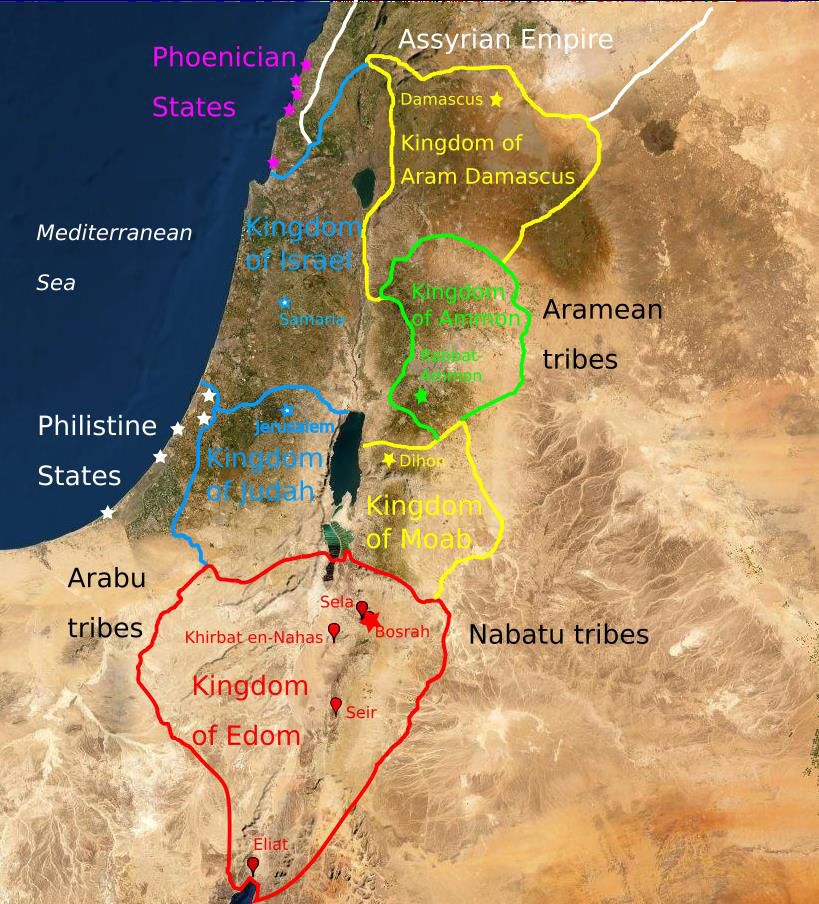
*Figure 2 Kingdoms of the Levant around 830 BCE.* <br/>
It is unclear how control of Edom shifted to the Arab Nabataean tribe. Yigal Levin (2020) mentions that Aharoni (1979, p. 408) thought that Edom had “collapsed under pressure from the Nabataeans who had penetrated the southern regions of Transjordan”, while (Bartlett 1999, p. 105) attributed the “collapse and subsequent decay” of Edom to the disruption of trade following the destruction of Judah, rather than to a purposeful move by the Neo-Babyloneans. The Es-Sela‘ carving seems to indicate that the Edomite kingdom was purposely disbanded by Nabonidus, perhaps even after an armed struggle. See also (Crowell 2007).
The Nabataeans were originally nomadic Arab merchants that built their wealth on far distance trading. The Nabataeans were highly skilled in managing the sparse water reserves of Southern Jordan and northern Arabia (Ortloff 2020). The oldest archaeological evidence of their presence in Petra is from 2nd century BCE when Petra became one of their central hubs. (Pearson 2011, see also Figure 3)

*Figure 3 Trading routes when Petra was at its peak. At that time the Nabataean Kingdom included the cities marked by red.*
When the Nabataean king Rabbel II died in 106 CE the Nabataean Kingdom was acquired and incorporated in the Roman Empire under Emperor Trajanus. Between 111 CE and 114 CE the Romans built the Via Nova Traiana from Bostra2 in Syria via Petra to Aela3 following ancient routes. The former Nabataean Kingdom became a Roman province named Arabia Petraea.
The Tabula Peutingeriana, a Roman road map of which the original is dated to the third century, marks Petra as an important site on the Via Nova Traiana (Graf 1978: 18). As part of the Diocletian reforms the region changed name to Tertia Palaistinia Salutaris (Nasarat 2017). Under Emperor Constantine the Great the city became the seat of a bishopric. At the turn of the 5th century CE, the Notitia Dignitatum notes that the province Tertia Palaistinia Salutaris was administrated by a praeses or provincial governor (Ward 96 2008: 90).
By the 5th century Petra was the administrative center of the Byzantine province of Tertia Palaistinia (Fiema 1991:113; Ward 2008: 90). There has been considerable debate if and for how long Petra was the capital of this new province, at what point this function was established, and when it was transferred to the new capital Bostra4.
Although Petra’s wealth declined because of the redirection of trade goods via sea routes and increased traffic on the northern land routes that now passed through Palmyra, it remained an important center and a provincial capital (Watson 2001:471). Around 600 CE the demand for incense had fallen and most of the trading through the Arabian Desert was based on leather and textile.
Much of the area became part of the Ghassanid Kingdom which was a client kingdom of the Byzantine Empire and acted as a buffer against the Sassanian Empire and the Arab tribes in the south. The Ghassanid Kingdom lasted until it was conquered by the Muslims.
A Divided City
From the Petra Papyri it is easy to assume that Petra was a Christianized city. After all, the papyri speak mostly of Christians. Other Byzantine writings speak of churches, a cathedral, and even a bishop, Asterius of Petra, who was sent to the great church Council of Alexandria in 231 CE. However, it must be remembered that the Petra Papyri were found in a church. They were the records of only one family; that of Theodoros son of Obodianos, which date from 537 - 593 CE, and not historical records of what was happening on a wider scale in the city. The time of the Petra Papyri overlaps the childhood of the prophet Muhammad (570-632 CE) according to the traditional Islamic account.
But the archeological record seems to tell a slightly different story. From a survey of buildings in Petra, it becomes obvious that the Christians occupied only one sector of the city. All of the Christian churches, buildings and Christian tombs are located in one area. The rest of the city appears to have maintained its polytheist pagan identity.
What is fascinating is that while the Christian sector of Petra was mostly in the northeast corner of the city, the pagan temples dominated the city center. The Polytheist and Christian pilgrims would have used the same grand processional way through the siq and down the colonnaded city street to their respective places of worship. See Figure 4.
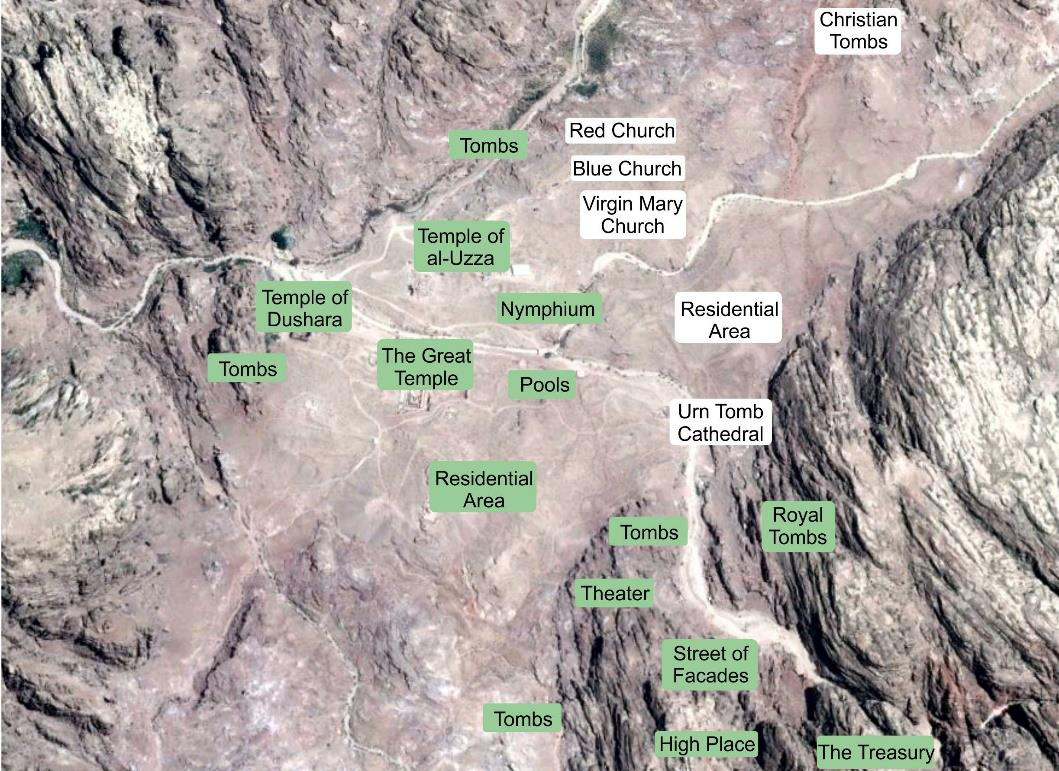
*Figure4 Christian places are in the north while Pagan places occupy the rest of the city.*
There was a continual cycle of earthquakes and rebuilding throughout Petra’s history. But in 693 CE and again in 713 CE earthquakes destroyed much of Petra. The first of these earthquakes destroyed the water management system and after the second earthquake the city was never rebuilt.
3. Pre-Islamic names for Petra
3.1 The oldest name: Seirריִעֵשׂ
The Egyptian Amarna Letters mention a place called “Seir, in the land of Shasu” which most historians agree to be the mountains around Petra in Jordan. In the temple at Soleb Faroe Amenhotep III (1386-1349 BCE) listed Egyptian campaign accounts with the mountains of Petra being called “Pel”, “Sela” or “Seir.” (Leoussi-Grosby 2007)
The Bible tells us that Mount Seir (ריִעֵשׂ) was named after Seir the Horite, whose offspring had previously inhabited the area (Genesis 14:6, 36:20). The children of Esau (the Edomites) battled against the Horites and destroyed them (Deuteronomy 2:4-5, 12, 5 22). It is specifically noted that this is the place where Esau made his home. (Genesis 32:3; 33:14, 16; 36:8; Joshua 24:4). Later the prophet Balaam, predicting Israelite victories over the Trans-Jordanian nations at the end of their Exodus from Egypt, stated
“Edom shall be a possession; Seir also, his enemies, shall be a possession.” (Numbers 24:18)
Much later Mount Seir is given as the location where the remnant “of the Amalekites that had escaped” were annihilated by five hundred men from the tribe of Simeon (1Chronicles 4:42-43). Later the inhabitants of Mount Seir united with the Ammonites and Moabites against Jehoshaphat (870-849 BCE) of Judah (2 Chronicles 20:22-23). Mount Seir is also mentioned in the prophetic books (Isaiah 21:11 and Ezekiel 25:8, 35:10).
3.2 The Hebrew name:עַלֶס” Sela” 5
Sela” means rock in Hebrew. The root sl’ “ infers the meaning of cleave or split (Strong’s Hebrew Lexicon 05554). In the Bible “Sela” is applied to a number of large prominent rocks, in Judges 15:8, 15:11, 20:45-47, and or “Sela-hammahlekoth” ‘The Rock of Mahlekoth’ in 1 Samuel 23:28. These are large prominent rocks projecting out from the surrounding hills. The border of the Amorites is listed as going up to “Ma’aleh ‘Aqrabbiym then to Sela and then going upward…” (Judges 1:36)
Here Sela is not identified with anything else, and it is assumed the reader knows where it is. In one case Sela is used to refer to a mountain near the Edomite capital of Bozrah but in other cases Sela may refer to Petra.
3.3 The Nabataean name: Raqīm
Recently there was an excellent article by Mehdy Shaddel (2017) where he demonstrated that the Nabatean name for the Petra valley was Raqīm.
![*Figure 5 Near the entrance of the Siq in Petra is the text: “This is the funary monument of PTRYS, son of TRPTS, the honoured one who was in RQMW, who died in GRSW and was buried there, \[and] who was a servant of the god of TYMW, his lord.”*](/media/01explore/08FoundingIslam/Photos/Fig5.bmp)
*Figure 5 Near the entrance of the Siq in Petra is the text: “This is the funary monument of PTRYS, son of TRPTS, the honoured one who was in RQMW, who died in GRSW and was buried there, \[and] who was a servant of the god of TYMW, his lord.”*
Shaddel traces the name RQM through funerary inscriptions (Figure 5), rabbinic writings, a letter attributed to Cyril of Jerusalem, Syriac texts, a homily attributed to Eusebius of Caesarea, The Book of the Laws of Countries by Bardaiṣān of Edessa, the writings of Flavius Josephus, as well as Biblical texts. He also includes Yāqūt and other Arab writers of the first dozen centuries of Islam.
3.4 The Greek name: ΠΕΤΡΑ“Petra”
Josephus (the son of a Jewish priest) had access not only to the Jewish Scriptures, but also acquired manuscripts taken from the Roman conquest of Jerusalem in 70 CE. He 180 writes:
“And when he came to a place which the Arabians esteem their metropolis, which was formerly called Arce, but has now the name of Petra: at this place, which was encompassed with high mountains, Aaron went up one of them, in the sight of the whole army:…” (Josephus 4:7)
The word “Arce” here is not attested to by other ancient writers, but it illustrates that the area of Petra was known by different names, perhaps by different people who occupied the Petra mountains at different times in its history.
In the Greek language, The Rock is ΠΕΤΡΑ, which refers to a large mass of rock. Strong’s Concordance identifies it as a feminine noun meaning ‘a mass of connected rock,’ which is distinct from the masculine noun ΠΕΤΡΟΣ, which is ‘a detached stone or boulder.’ Souter defines it as a ‘solid or native rock, rising up through the earth a huge mass of rock, such as a projecting cliff.’ In the masculine form, however it is a stone, such as a man might throw. (Zodhiates 1992).
An early Greek historical reference to The Rock was when Antigonids raided a Nabataean storage place in 312 BCE. Diodorus Siculus speaks of the Nabataeans:
“… But when the time draws near for the national gathering at which those who dwell round about are accustomed to meet, some to sell goods and others to purchase things that are needful to them, they travel to this meeting, leaving on a certain rock their possessions and their old men, also their women and their children. This place is exceedingly strong but unwalled, and it is distant two days’ journey from the settled country. After waiting for this season, Athenaeus set out for the rock with his army in light marching order. Covering the twenty-two hundred stades from the district of Idumaea in three days and the same number of nights, he escaped the attention of the Arabs and seized the rock at about midnight. On the next day, however, when he had advanced upon the rock, one of the barbarians called to him, saying: “King Demetrius,…” (Diodorus Siculus XIX, 940:95:1)
There has been some discussion whether The Rock in the Greek account of Antigonids refers to Petra, or to the large rock Es-Sela 50 km north of Petra near the Edomite capital Bozrah. (Pearson 2011, footnote 4) Es-Sela is also known as The Rock, and is the location mentioned in II Kings 14:7. In effect, there were most likely two ‘Rocks’ or Petras. Hence, the Peutinger map, which is based on an archetype from the Roman imperial period, indicates Petrae (plural) east of the Arabah (Retso 2011). If Es-Sela’ is identified as The Rock that Antigonids attacked in 312 BCE., then the city of Petra becomes the second Rock in Arabia Petraea, or Arabia of the two rocks.
3.5 The Latin name: PETRA
The city of Petra also had a Roman name. Pliny the Elder, writing about 70 CE mentions the city as “PETRA” the capital of the Nabataei and the center of their caravan trade. (Natural History, Pliny, Book 6:32). While this name was used by many Roman historians, the city also had other Latin names.
From the Petra papyri, discovered in 1993 in a Byzantine church in Petra, we read that the city had numerous Byzantine names such as Imperial Colony Antoniana(Nasarat-219 Twezzi 2017). The papyri are the archives of a certain Theodoros son of Obodianos and his family who lived in Petra and its vicinity in the period between 537 and 593 CE. This would be during the period just before the prophet Muhammad was born, up until he was in his twenties. The records contain mainly economic and legal documents illustrating the life of a Nabataean Christian family in Petra and the neighboring areas. (Frösén, 224 2002: 6–9; Nasarat-Twezzi 2017)
3.6 Honorific titles: Metropolis of Tertia Palaestina Salutaris
Josephus indicated that Petra was a metropolis. The original meaning of μητρóπολις(mētrópolis) is mother of settlements and was used for a city that established other cities or colonies. Later it became a honorific title of a large city.
The Roman Emperor, Hadrianus, who visited Petra in 130 CE on his grand tour of the eastern Roman Empire, gave the city the name ΑΔΡΙΑΝΗΠΕΤΡΑΜΗΤΡΟΡΟΛΙΣ which means ‘Hadrianic Petra Metropolis’. (Lewis 1989:489, 519). This name only appears in a single papyrus dated 9 July 131 CE, which may indicate it was a recently bestowed honor on the occasion of the visit of the emperor (Lewis 1989: Papyrus 25). After Emperor Elegabalus (218-222 CE) the name of the city on coins changed to Petra Metropolis Antoniana (Spijkerman 1978:220-235; Bowersoek 1983: 110-111).
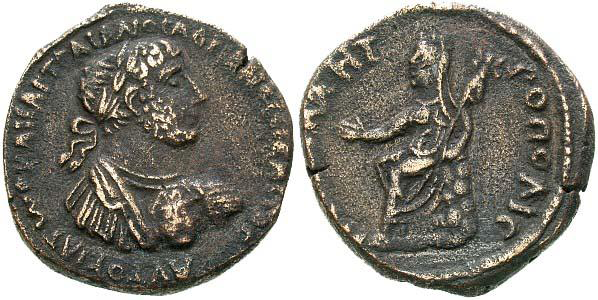
*Figure 6 Inscription: ‘Autokrator Kaisar Traianos (H)adrianos Sebastos.* *Reverse: ΠΕΤΡΑΜΗΤΡΟΡΟΛΙΣ“PETRAMETROPOLIS”, which means ‘Petra Metropolis’. From http://www.forumancientcoins.com/catalog/roman-and-greek-coins.asp?zpg=6762*
In the Petra Papyri the city of Petra was known as the Metropolis of Tertia Palaestina Salutaris. (Spijkerman 1978: 240; Gagos-Frösén 1998: 476).
It is interesting to note that honorific titles were used in Byzantine society to underline social standing and importance. For example, the use of “flavios” before personal names was an indication of status. The citizens of Petra used a host of honorific titles, some general, and some restricted to office holders and persons in important professions or of high social standing. For example, “eudokimotatos” meant ‘most honorable’, “theosebestatos” meant ‘most religious’, “lamprotatos” meant ‘most brilliant’, and “eulabestatos” meant ‘most pious’. (Koenen 2003:253)
The term Mētrópolis as found in the Petra Papyri sometimes begins with the Greek word ΕΝΓΕΝΗΣ, which in the 6th century was usually understood as ‘blessed’ or ‘noble.’ Around this time in the Christian world, the term ΕΝΓΕΝΗΣwas beginning to be used as ‘holy.’ The use of this word would have been particularly significant because before the 5th century ‘holy’ would have been understood as ‘conspicuous’, whereas after the 5th century, during the Christian epoch, ΕΝΓΕΝΗΣ is usually assumed to mean ‘holy’. In the Petra papyri and elsewhere, the Greek term ΕΝΓΕΝΗΣ was being associated with great churches, and other buildings such as tombs and great civic buildings and structures. Hence, the exact meaning of the epithet ΕΝΓΕΝΗΣ at this time remains uncertain. Neither ‘holy’ nor ‘noble’ nor ‘blessed’ would have been expected for a city (Frösen 2002:30), and it is a very rare epithet for a Roman city (Koenen 1996:184). The uniqueness of this term is significant, and it would seem that the residence at Petra were very proud of this special term. Due to the religious nature of the city, the name Blessed Mother of Settlements/Colonies seems to fit this location.
3.7 A new name: Mecca
In the search for the names of Petra, we have come across one writer who calls the city of Petra by the name of Mecca. Thomas Artsruni, a contemporary of Al-Ṭabarī who, writing sometime before his death in 887 CE speaks of the prophet Muhammad. In Book 270 2, chapter 4 he mentions that Mecca is in Arabia Petraea.
“*At this time there were some despotic brothers in the regions of Arabia Petraea in the place [called] P’aṙan, which is now called Mak’a - warlike chieftains, worshippers of the temple of the image of the Ammonite temple called Samam and K’abar. It happened that one of them, called Abdla, died leaving a son of tender age called Mahmet.*” (Artsruni 274 1985: 165)
In this account, the writer, Thomas Artsruni tells us that the prophet Muhammad6 was born and raised in Mek̇k̇a7 in the part of Arabia Petraea called P’aṙan. As we will see below the only obvious candidate for the Mek̇k̇a in Arabia Petraea was the city of Petra. It is noteworthy that Artsruni states “which is now called Mek̇k̇a”, which is a clear indication that he is talking about a town that has changed its name.
The area of Paran is also known as P’aṙan, Pharan and also as Faran. While it has been popular to associate Paran with the Sinai desert a close examination of early records demonstrate that Paran was not Sinai. The Bible suggests that at one point the Israelites journeyed outside of Sinai into the wilderness of Paran (Number 10: 12-16), and that Sinai and Seir are separate places (Deuteronomy 33:1&2). An Armenian historian, describing the Arab conquest during his time, wrote that the Arabs “assembled and came out from Paran”. (Sebeos, Chapter 30) The only major city near Paran was Mount Seir, known to the ‘Christian west’ as Petra. Sebeos tells us that the Muslim armies started from here.
Paran did not extend far into central Arabia as some Muslims have suggested. The Arab geographer Al-Muqaddasi tells us that Paran extends south down the Red Sea until the place where it branches into two “at the northern extremity of *al-Hijaz*at a place called Faran” (as pronounced by the Arabs who have no “P” in their alphabet.
To get a better idea of where Artsruni locates Paran one can look at how he continues:
“*The Jews joined with the Ismaelites, forming a large army. Attacking P’aŕan they inflicted a great defeat on their opponents, killed Apljehr and many of the Ammonite and Moabite troops*…” (Artsruni 1985:167)
The old kingdoms Ammon and Moab were situated just north of Petra. These old kingdoms were all incorporated in Arabia Petraea. This supports that Paran was part of Arabia Petraea and not located further south. It also explains why Artsruni describe the Ka’ba as an Ammonite temple.
Another early Islamic writer, Al-Hamdani (1938: 285) writes in his book Geography of the Arabic Peninsula that the Paran mountains around Mecca were named after Paran son of Amalek. Azraqi also mentioned the Amalakites as associated with ‘Mecca.’ (Azraqi 2003)
Now the history of the Amalakites is relatively well known but the Amalakites lived north of Edom, never in Saudi Arabia. Eventually the Amalakites were wiped out. The last remnants of the Amalakites escaped to Mount Seir.
“And some of them, even of the sons of Simeon, five hundred men, went to Mount Seir, having for their captains Pelatiah, and Neariah, and Rephaiah, and Uzziel, the sons of Ishi. And they smote the rest of the Amalakites that were escaped, and dwelt there unto this day.” (I Chronicles 4:42-43)
From this we can understand that Mount Seir (Petra) was the southernmost point that the Amalakites ever reached.
4. Ḥegrā another name of interest
The ancient area known as Ḥegrā8 was the area where King Obodas III of the Nabataeans was located, and is mentioned by early writers such as Strabo (Strabo 16.4.2) around 10 CE and Pliny the Elder (Pliny, 32.28) ca. 60 CE. It was approximately 460 km south-east of Petra and about 40 kilometers north of al-Ula in modern day Saudi Arabia.
The area was occupied by various groups over the centuries, but the greatest impact was made by the Nabataeans, who designated it as one of their burial locations. Like Petra, the entire area is filled with Nabataean tombs and accompanying dining halls. Sometime after the Nabataean era, this great cemetery and accompanying residential area became identified as “Al-Ḥijr” meaning ‘the rock’. During the Islamic period it also became known as “Madāʼin Ṣāliḥ”, which is commonly translated ‘The cities of Saleh’. In order to understand the name Meda’in Saleh we must understand a little about the person of Ṣāliḥ.
The story of Ṣāliḥ is told in the Qur’an four times (Q7:73-79, Q11:61-68, Q26:141-158, Q27:45-53). In these references the Qur’an gives us examples of those who refused to believe and submit to the messengers that God had sent. The list of God’s messengers includes Noah, Hud, Ṣāliḥ, Lot, Shuaib and finally Moses. This list is repeated four times in the Qur’an and is always in the same order. If this list is chronological, then all of these messengers existed before the time of Moses. It may also be that each of the events mentioned in the list all took place in the same geographical area.
The Qur’an speaks of places and events that are familiar to the audience. The story of Lot takes place close to Petra. Moses brought the Israelites near to the area as is attested by the Biblical record and also by the presence of Aaron’s tomb just a few miles from Petra. If this is the case, the other messengers would have also been sent to those who occupied the Petra Mountains, such as the Edomites, Amalekites, and Midianites. In every case a messenger warns the people but they reject the messenger, and God brings judgment on them. In the same way, Muhammad is presented as another warner to these same people.
In the Qur’an Noah is presented as the first warner, who warned of a coming flood. When it was fulfilled Noah was established as an authentic messenger.Two people followed Noah. The prophet Hud was a warner who spoke to the people of ‘Ad that may be identified with an Edomite led federation of tribes (Gibson 2010). He is followed by Ṣāliḥ who speaks to the people of Tham’ud.Gibson argues that these were the Nabataean led federation of tribes. (Gibson 2010). Then Lot becomes a warner to Sodom and Ghomoroah, which were also near to Petra. Then Shuaib warns the nearby Midianites, who were punished by an earthquake (Q7:90). Sura 11:94 describes the earthquake as a blast. Ṭabarī Vol 2:46 tells us that the Jews objected that Hud, Ṣāliḥ, and Shuaib are not mentioned in the Jewish scriptures, so it seems that the Qur’an repeats the stories four times to answer the Jewish objections. In all four accounts, Ṣāliḥ warns the people, and God punishes by an earthquake.
What is important here is that Ṣāliḥ was sent to a city that suffered an earthquake. While earthquake destruction is evident in Petra (which has a long history of earthquakes) there is little evidence of major earthquake destruction in Ḥegrā (Mada’in Ṣāliḥ).4
The Ḥegrā area appears to have begun a gradual decline in the early 2nd century 355 CE without a cataclysmic end, so how and why did the name Ṣāliḥ become attached to Ḥegrā in Saudi Arabia? Perhaps this identification came from the Qu’ran:
“Here are their homes, in ruins, on account of their iniquities. Surely in this is a sign for people who know.” (Q27:52)
When pilgrims passed by Ḥegrā on their way to Mecca in Saudi Arabia, and wondered at the great tombs carved there, it is easy to see why they could associate this with the “ruined homes” mentioned in Ṣāliḥ’s story (Q27). However, in Ḥegrā there are no homes to be seen (Figure 6). These have all been covered over by the sands of time.
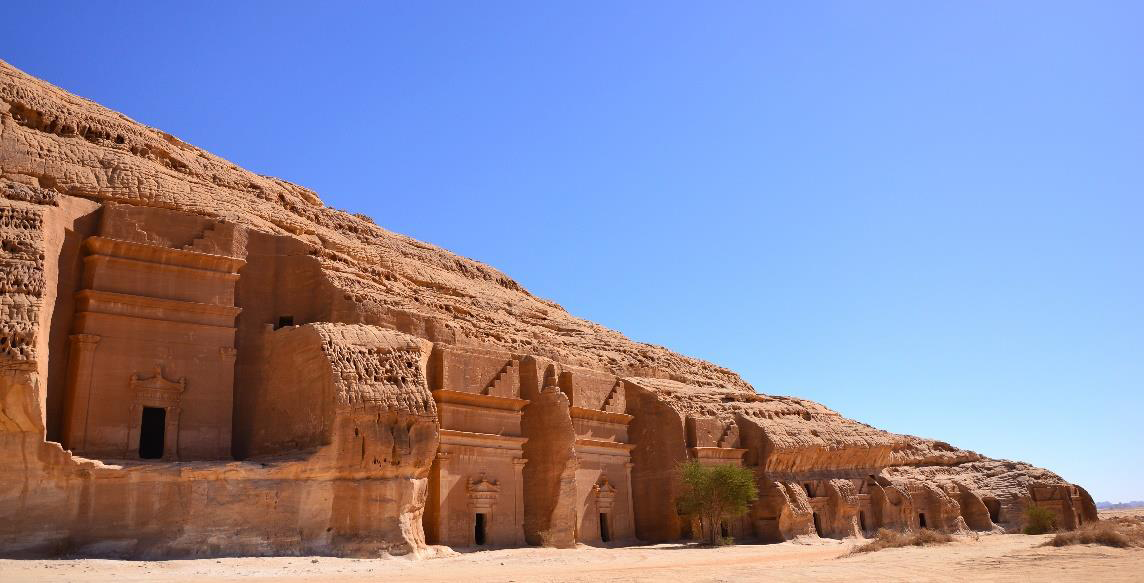
*Figure 7 The Ḥegrā location was mostly a burial site, and not a great city. (FromWikimedia Commons).*
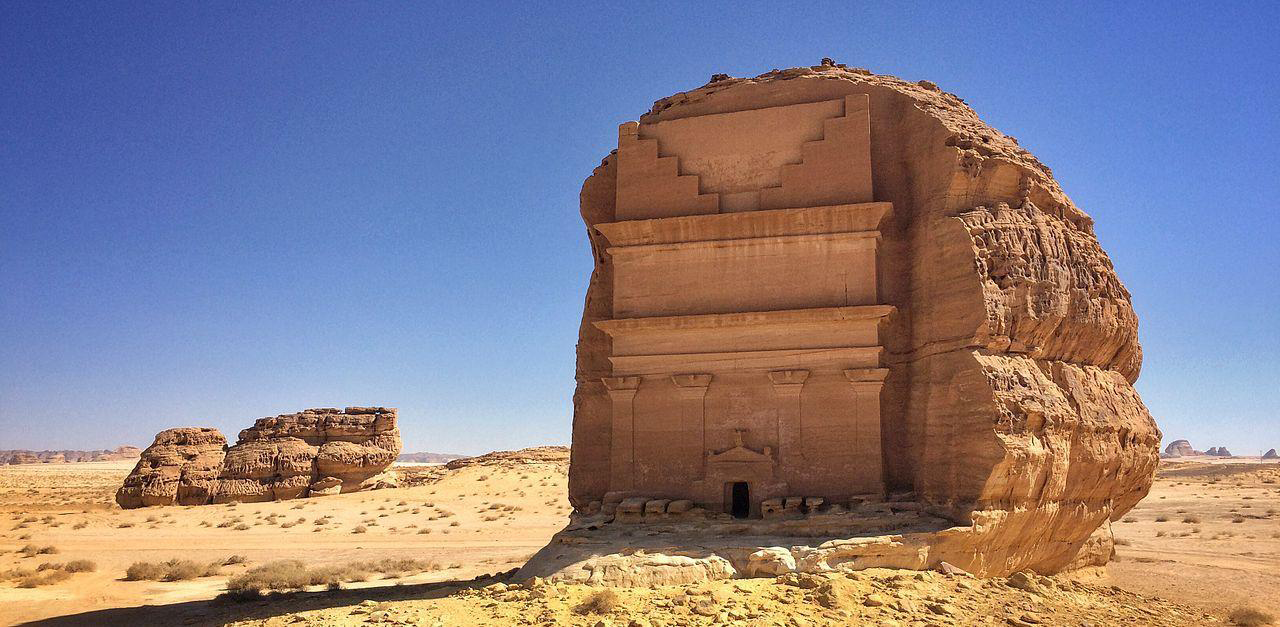
*Figure 8 Ḥegrā is not made out of a single projecting rock, but out of many scattered rocks in the desert. (FromWikipedia)*
The wide-spread tombs challenge the concept of this being a city destroyed by an earthquake, and so the identification of Ḥegrā with ‘the cities of Saleh’ doesn’t seem appropriate (Figure 8). Both al-Ḥijr and the story about Ṣāliḥ would fit much better to Petra. Since Petra was long forgotten, the references referring to a place called al-Ḥijr were eventually applied to the Nabataean burial area in Saudi Arabia, al-Ḥegrā.
5. Names of the Holy City of Islam
*5.1 Mecca*376
There is only one reference to Mecca in the Qur’an. (Q48:24) It should be noted that Mecca here is mentioned as the name of a valley, and does not necessarily reference a great city.9
وَهُوَ الَّذِي كَفَّ أَيْدِيَهُمْ عَنكُمْ وَأَيْدِيَكُمْ عَنْهُم بِبَطْنِ مَكَّةَ مِن بَعْدِ أَنْ أَظْفَرَكُمْ عَلَيْهِمْ وَكَانَ اللَّهُ بِمَا تَعْمَلُونَ بَصِير
“In the valley of Mecca it was He who held their hands back from you and your hands back from them after He gave you the advantage over them––God sees all that you do.” Translation by Abdul Haleem
While the lack of Mecca references may surprise western readers, Muslim scholars insist that there are other names used for Mecca in the Qur’an.
5.2 The Mother of Settlements - Um Qura - Sura 6:92
وَهَٰذَا كِتَابٌ أَنزَلْنَاهُ مُبَارَكٌ مُّصَدِّقُ الَّذِي بَيْنَ يَدَيْهِ وَلِتُنذِرَ أُمَّ الْقُرَىٰ وَمَنْ حَوْلَهَا وَالَّذِينَ يُؤْمِنُونَ بِالْآخِرَةِ يُؤْمِنُونَ بِهِ وَهُمْ عَلَىٰ صَلَاتِهِمْ يُحَافِظُون
This is a blessed Scripture that We have sent down to confirm what came before it and for you to warn the Mother of Settlements and all around it. Those who believe in the Hereafter believe in this Scripture, and do not neglect their prayers. (Q6:92 Translated by Abdul Haleem
Note that both Mecca and Petra were known as the Mother of Settlements, but one was in Arabic and the other in Greek.
*5.3 The Noble City*, or Blessed City, *Blessed - Qur’an 3:96*
The Arabic term here is Mecca al-Mukarramah(مكةالمكرمة ) or Mecca the Blessed or Noble. For as long as people can remember, Mecca has been called the “Blessed City.” No oneknows where this term originated from, but for as long as people can remember, the Holy City of Islam has been associated with this term, just as it was also applied to the city of Petra.
*5.4 Becca*, Sura 3:96
The Qur’an refers to the city of Mecca as Bakkah in Surah Al Imran 3:96,
“*Indeed the first House [of worship], established for mankind was that at Bakka*h…” (Q3:96)
Most Muslims today understand the name Becca to be another name for Mecca, the place where Abraham and Ishmael set up an altar to God. This name is also transliterated as Baca, Baka, Bakah, Bakka, Becca, Bekka, among others. The Bible (Psalm 84:6) associates the name Becca with both a barren valley and pilgrimage, although some Christian argue that this refers to an unknown place that they assume would have been near to Jerusalem rather than to another place, such as the tomb of Aaron just outside of Petra.
*5.5 al-Raqīm* Q18:9
“Do you reckon the companions of the cave and of al-Raqīm to be among Our wondrous signs?” (Q18:9)
Mehdy Shaddel (2017) makes the case that this verse in the Qur’an is alluding to two different wonderous signs from God. The first sign was the companions of the cave (the severn sleepers), and the second sign was the great city of Al-Raqīm known to us as Petra. He notes that many commentors on the Qur’an did not understand that Al- Raqīm was the name of a city, and so some thought it was simply the name of a dog belonging to the seven sleepers.
*5.6 The Rock -*Ḥijr - Rock Sura 15
While most commentators on the Qur’an associate the Sura named Ḥijr with al-Ḥegrā in Saudi Arabia, there is nothing in the Qur’an to connect it with the Saudi location. Since the name Al-Ḥijr simply means The Rock, the name could equally apply to any location known as The Rock. As we have noted, Ḥegrā in Saudi Arabia has never suffered a major earthquake as mentioned in this Sura, but Petra (The Rock) has a long history of earthquakes making it a better candidate for the Qur’anic Ḥijr.
5.7 Masjid al Harām
قَدْ نَرَىٰ تَقَلُّبَ وَجْهِكَ فِي السَّمَاءِ فَلَنُوَلِّيَنَّكَ قِبْلَةً تَرْضَاهَا فَوَلِّ وَجْهَكَ شَطْرَ الْمَسْجِدِ الْحَرَامِ وَحَيْثُ مَا كُنتُمْ فَوَلُّوا وُجُوهَكُمْ
شَطْرَهُ وَإِنَّ الَّذِينَ أُوتُوا الْكِتَابَ لَيَعْلَمُونَ أَنَّهُ الْحَقُّ مِن رَّبِّهِمْ وَمَا اللَّهُ بِغَافِلٍ عَمَّا يَعْمَلُون
“*We have seen the turning of thy face unto Heaven, and indeed We will turn thee toward a qiblah well pleasing to thee. So turn thy face toward the Sacred Mosque, and wheresoever you are, turn your faces toward it. Truly those who have been given the Book know that it is the truth from their Lord. And God is not heedless of what they do.*” (Q2:144) - The Study Qur’an
It is very common for English translations of the Qur’an to translate Masjid al-Haram as the Sacred Mosque rather than the literal Forbidden Mosque. From the hadiths we learn that it was forbidden to kill others (Al Ṭabarī 1989, 654:61) or even kill animals (Al Ṭabarī 1990, 430:2) or “should neither shed blood in it nor cut down its trees” (Al-Bukhārī, Ḥadīth 1.104). The term Masjid al Harām is synonymous with Mecca today.
6. Discussion
In the ancient records, we can find at least six names for Mecca that were previously names associated with the city of Petra.
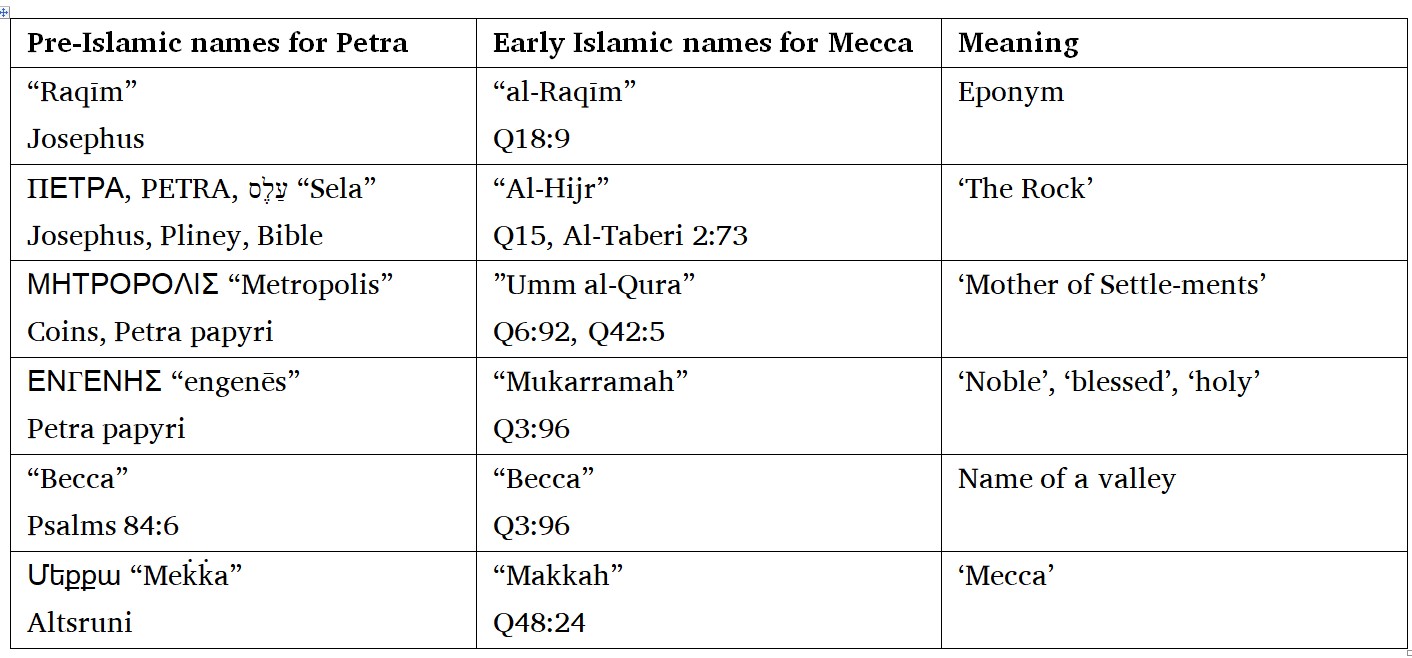
A chart of the names of Petra mentioned in this paper
In the book ‘Early Islamic Qiblas’ Dan Gibson (2016) noted that the Qiblas of the first hundred years of Islam all seem to face the city of Petra in Jordan. In the beginning of this article, we noted that since Petra was such an important city in the Arab world before earthquakes destroyed the city, one would expect that Islamic literature would at least have some reference to the city of Petra using the Arabic versions of the original names. If Petra was the original Mecca, then as time passed the connection between Petra and Mecca were forgotten and all references to the holy city of Islam became references to Mecca in present day Saudi Arabia. Islamic historians writing several hundred years later may have been confused by the similarity of names and associated the earlier stories with Mecca in Saudi Arabia. The time and reasons for transferring the stories about Petra to Mecca are important questions that will not be discussed in the present paper.
Footnotes
- Present day Busaira in Jordan. Also known as: Buṣayrā, Busheira, Bozrah, Botsra, or Botzrah in the past. Not to be confused with Bostra (present day Busrā al-Shām), Bushra, Bosra or Basra.
- Es-Sala’.
- Busrā al-Shām in southern Syria.
- Present day Aqaba.
- Busrā al-Shām in southern Syria.
- not to be confused with סֶלָה“ selāh”, that appears to be a liturgical-music mark.
- identified here as Mahmet.
- The literal transliteration of Մեքքա.
- Sometimes called Egra.
References
Artsruni, Thomas. History of the Artsrunic’. Translated by Robert W. Thomson. Byzantine Texts in Translation. Betroit: Wayne State University Press.
Aḥmed b. Yaḥyā Balādhūrī,. 1916. Kitāb Futūḥ al-Buldān. The Origins of the Islamic State. Translated by P. K. Hitti and F.C. Murgotten. Brill. Online:https://referenceworks.brillonline.com/browse/kitab-futuh-al-buldan-english-translation
Al-Azraqi. 2003. Ahkbar Makka: History of Makka. In Arabic. Mecca: Maktabat al-Asadi.
Bowersock, GlenWarren. 1971. A report on Arabia Provincia. *Journal of Roman Studies*61: 219-242.https://doi.org/10.2307/300018.
Bowersock, GlenWarren. 1983. *Roman Arabia.*Cambridge: Harvard University Press.
Al-Bukhārī, Ṣaḥīḥ. Hadiths. http://spokaneislamiccenter.org/sic/wp-content/uploads/Hadith-Sahih-Bukhari.pdf
Crone, Patricia. 1987. Meccan Trade and the Rise of Islam. New Jersey: Gorgias Press.
Fiema, Zbigniew Tomasz. 1991. “Economics, administration and demography of Late Roman and Byzantine Southern Transjordan.” PhD thesis, University of Utah.
Frösén, Jaakko. 2002. The Petra papyri: Information and significance. In *Petra. A city forgotten and rediscovered.*Edited by J. Frösén and Z. Fiema. Helsinki: Amos Anderson Arts Museum, pp. 18-22.
Gauthier, Henri. 1925. Dictionnaire Des Noms Géographiques contenus dans les textes Hiéroglyphiques. Société Royale de Géographie d’Egypte. https://archive.org/details/Gauthier1925_1
Gibson, Dan. 2010. Qu’ranic Geography. Vancouver: Independent Scholars.
Gibson, Dan. 2017. Early Islamic Qiblas. Vancouver: Scholars Press.
Graf, David F.. 1978. The Saracens and the defense of the Arabian frontier. *Bulletin of the American Schools of Oriental Research*229: 1-22.
al-Hamdāni. 1938. Al-Hamdāni. Translated by N. A. Faris. The Antiquities of South Arabia. Princeton, NJ: Princeton University Press.
ibn Hishām. 2000. Sirat ibn Hisham: Biography of the Profet. Translated by ‘Abdus-Salām M. Hārūn. Cairo: Al-Falah Foundation for 485 Translation, Publication and Distribution
Ibn Sa’d. 2009. Kitab al-Tabaqat al-Kabir. Translated by S. M. Haq. New Delhi: Kitab Bhavan
Healey, John F. 1993. The Nabataean tomb inscriptions of Mada’in Salih. Manchester: Journal of Semitic Studies Supplement 1.
Healey, John F. 2001. *The Religion of the Nabataeans. A Conspictus.*Leiden: Brill.
Hickey, T.M. 2004. The Petra Papyri I (Book review), I. *Bulletin of the American Schools of Oriental Research*304: 92-94https://doi.org/10.2307/4150117.
Josephus, Flavius. 1737. Antiquities of the Jews Book IV. Translated by William Whiston. London. , Available athttps://penelope.uchicago.edu/josephus/ant-4.html.
Koenen, Ludwig. 1996. The carbonized archive from Petra. *Journal of Roman Archaeology*9:177-188.https://doi.org/10.1017/S104775940001655X.
Koenen Ludwig; Daniel, Robert W.; Gagas, Traianos. 2003. Petra in the Sixth Century: the Evidence from the Carbonized Papyri. In Petra rediscovered. Lost city of the Nabataeans. Edited by Glenn Markoe. London: Thames & Hudson. pp.250-261.
Lane, Willian Edward. 1869. Lanes Arabic English Lexicon, 6468 page edition, Naveed U1 Islam.
Leoussi, Athena; Grosby, Steven (eds.). 2007. Nationalism and Ethnosymbolism: History, Culture and Ethnicity in the Formation of Nations. Edinburgh: Edinburgh University Press.
Levy, Thomas E.; Bettilyon, Megan; Burton, Margie M. 2016.The Iron Age copper industrial complex: A preliminary study of the role of ground stone tools at Khirbat en-Nahas, Jordan.Journal of Lithic Studies.3 (3): 313–335. doi:10.2218/jls.v3i3.1648
Lewis, Naphtali. 1989. Documents from the Bar Kokhba Period in the Cave of Letters: Greek Papyri (Judean Desert Studies). Desert Hot Springs: Biblical Archaeological Society. Levin, Y. 2020. The Religion of Idumea and Its Relationship to Early Judaism. *Religions,*11:487.https://doi.org/10.3390/rel11100487
Mas’ūdī, Abū Hasan. 1869. Les Prairies D’or, Vol 5 (The Meadows of Gold and Mines of Gems). Paris pp.192-193.
Milstein, Mati. 2019. Petra. The “Lost City” still has secrets to reveal: Thousands of years ago, the now-abandoned city of Petra was thriving. National Geographic. no. 12.
Nasarat, Mohammed; Twissi, Sa’ad A. Nov. 2016. The titles of Petra in the sixth century: the evidence from the Petra papyri. *Arabian Archaeology and Epigraphy*27(2): 208-214.https://doi.org/10.1111/aae.12079
Ortloff, Charles R. 2020. Hydraulic Engineering at 100 BC-AD 300 Nabataean Petra (Jordan). Water 12(12), 3498. https://doi.org/10.3390/w12123498
Pearson, Jeffrey Eli. 2011. “Contextualizing the Nabataeans: A Critical Reassessment of their History and Material Culture.” PhD thesis. Berkeley.
Pliny the Elder. 1855. Natural History. Translated by John Bostock and H.T. Riley. Available athttps://www.gutenberg.org/files/57493/57493-h/57493-h.htm
Pollard, Nigel. 2000. Soldiers, cities, and civilians in Roman Syria. Ann Arbor: University of Michigan Press.
Retso, Jan. 2011. Petra and Qadesh. *Svensk Exegetisk Årsbok*76: 115-136.
Schumm, Walter R. 2020. How Accurately could Early (622-900 C.E.) Muslims Determine the Direction of Prayers (Qibla)? *Religions*11(3), 102.https://doi.org/10.3390/rel11030102
Sebeos. 1985. Sebeos’ History. Translated by Robert Bedrosian.https://archive.org/details/SebeosHistoryOfArmenia
Shaddel, Mehdy. October 2017. Studia Onomastica Coranica: AL-Raqīm, Caput Nabataeae. *Journal of Semitic Studies*62(2): 303-318.https://doi.org/10.1093/jss/fgx022
Souter, Alexander. 1917. A Pocket Lexicon to the Greek New Testament. Oxford: The Clarendon Press.
Spijkerman, Augustus. 1978. The coins of the Decapolis and Provincia Arabia. (Studii Biblici Franciscani Collectio Major). Jerusalem:Franciscan Printing Press.https://doi.org/10.2307/299141
Strabo. 1903. The Geography of Strabo. Literally translated with notes, in three volumes. London: George Bell & Sons. Available online:https://www.perseus.tufts.edu/hopper/text?doc=Perseus%3atext%3a1999.01.0239Strong, James. 2010. The New Strong’s Expanded Exhaustive Concordance of the Bible. Nashville: Thomas Nelson Publishers.
Al- Ṭabarī. 1989. The History of al-Tabari, Volume XX. Translated by G.R. Hawtin. Albany: State University of New York Press.
Al- Ṭabarī. 1990. The History of al-Tabari, Volume XXI. Translated by Michael Fishbein. Albany: State University of New York Press.
al-Tamimi, Aymenn Jawad. August 2019. The Byzantine-Arabic Chronicle: Full Translation and Analysis.http://www.aymennjawad.org/23129/the-byzantine-arabic-chronicle-full-translation
Ward, Walther David. 2008. “From Province Arabia to Province Tertia: The impact of geography, economy, and religion on sedentary and nomadic communities in the later Roman Province of Third Palestine.” PhD thesis. Ann Arbor: University Microfilms International.
Watson, Palema. 2001. The Byzantine period. In *The archaeology of Jordan.*Edited by B. MacDonald, R. Adams, and P. Bienkowski.Sheffield: Sheffield Academic Press. pp 461-502.
Zodhiates, Spiros. August 1992. Complete Word Study Dictionary: New Testament. AMG Publishers.
- Present day Busaira in Jordan. Also known as: Buṣayrā, Busheira, Bozrah, Botsra, or Botzrah in the past. Not to be confused with Bostra (present day Busrā al-Shām), Bushra, Bosra or Basra. [return]
- Busrā al-Shām in southern Syria. [return]
- Present day Aqaba. [return]
- Busrā al-Shām in southern Syria. [return]
- not to be confused with סֶלָה “selāh”, that appears to be a liturgical-music mark. [return]
- identified here as Mahmet. [return]
- The literal transliteration of Մեքքա. [return]
- Sometimes called Egra. [return]

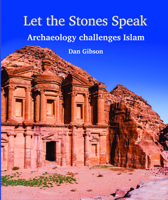

Page Discussion
Membership is required to comment. Membership is free of charge and available to everyone over the age of 16. Just click SignUp, or make a comment below. You will need a user name and a password. The system will automatically send a code to your email address. It should arrive in a few minutes. Enter the code, and you are finished.
Members who post adverts or use inappropriate language or make disrespectful comments will have their membership removed and be barred from the site. By becoming a member you agree to our Terms of Use and our Privacy, Cookies & Ad Policies. Remember that we will never, under any circumstances, sell or give your email address or private information to anyone unless required by law. Please keep your comments on topic. Thanks!